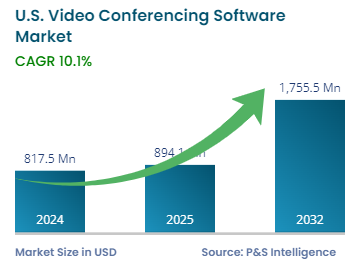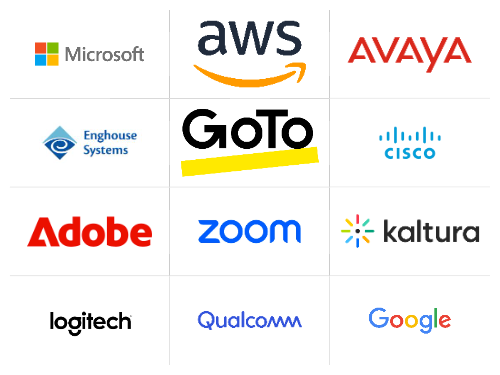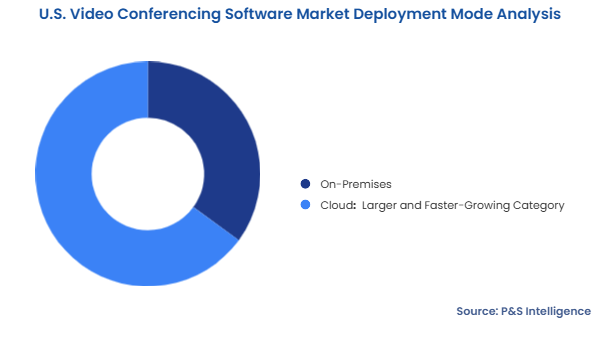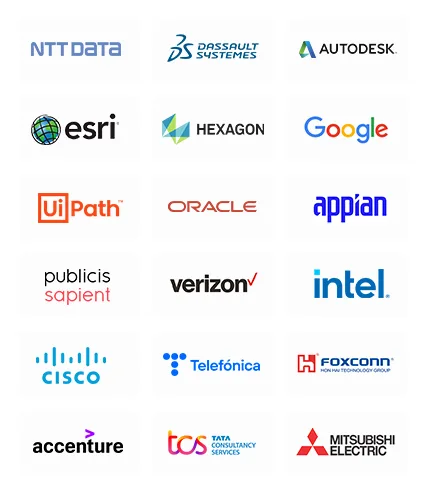U.S. Video Conferencing Software Market Growth Factors
AI-Powered Virtual Meetings Are a Trend
Artificial intelligence is strongly influencing the video conferencing software market, by making virtual meetings more well-planned, interactive, and fruitful. AI-powered virtual meetings strengthen collaboration by automating routine tasks, improving the audiovisual quality, and providing real-time insights.
Such software enables multiple functions, such as speech-to-text conversion, which improves readability. Further, the combination of advanced noise cancellation with voice enhancement boosts audio clarity by removing background disturbances, to enable smoother conversations. Further, the automated meeting summaries provided by AI-powered tools streamline follow-ups, while enhancing productivity. In the same way, facial recognition, combined with emotion analysis, delivers data about participant engagement, which assists organizations in evaluating meeting effectiveness.
Additionally, intelligent virtual assistants perform scheduling tasks and manage agendas, while sending reminders, to eliminate manual work. Virtual collaboration platforms also offer data privacy through AI-driven cybersecurity measures, which include fraud detection capabilities and encrypted communication channels.
The ongoing evolution of AI will further enhance the effectiveness of augmented reality and virtual reality integration, enabling the development of more-immersive meeting experiences for future hybrid work environments.
Adoption of Hybrid Work Environments Is Primary Growth Driver
The increasing adoption of flexible work models by organizations in the U.S. drives the spending on sophisticated digital collaboration tools to maintain smooth communication between the in-office and remote staff. Video conferencing platforms serve as critical tools for team meetings, client interactions, virtual training sessions, and remote project management.
Despite the ebbing of the COVID-19 pandemic, remote and hybrid work models are the chief preferences for current and prospective employees in the country. A recent study revealed that over 35% of the American people prefer remote work, while around 60% are okay with hybrid models. Additionally, over 30% of the respondents listed flexible working models as the chief reason for wanting to switch jobs or staying at their current one.
The integration of AI-powered automation, real-time collaboration, and enhanced security functionalities drives the adoption of video conferencing solutions. Businesses are, additionally, increasingly focusing on scalable cloud solutions because they offer budget-friendly communication tools that are readily available. The education, healthcare, and government sectors in the country highly depend on virtual communication tools to support remote learning, telemedicine services, and policy discussions, respectively.
Hence, as organizations adopt hybrid work models as a permanent approach, the demand for video conferencing software that is efficient, secure, and easy to use will rise in the years ahead.
U.S. Video Conferencing Software Market Competitive Landscape
The U.S. video conferencing market is highly fragmented, with numerous players competing across different customer segments, industries, and technological offerings. Beyond the recognizable brands Zoom, Microsoft Teams, Cisco Webex, and Google Meet, the market consists of multiple smaller organizations that develop purpose-built and specific video conferencing solutions. Startups, alongside small businesses, mostly use flexible, cost-effective, cloud-based video conferencing platforms, while large organizations implement comprehensive software with AI-enabled functionalities across their enterprise.
Product development under GDPR and CCPA regulations creates market space for new companies that display a strong focus on secure communication solutions. The market differentiation is credited to the integration of upgraded AI features and enhanced security protocols in conjunction with industry-specific functionalities and immersive VR technologies.
U.S. Video Conferencing Software Companies:
- Microsoft Corporation
- Cisco Systems Inc
- Logitech International S.A.
- Amazon Web Services Inc.
- Qualcomm Incorporated
- Adobe Inc.
- Zoom Communications Inc.
- Enghouse Systems
- Google LLC
- GoTo Technologies USA, LLC
- Avaya Holdings LLC
- Kaltura Inc.




